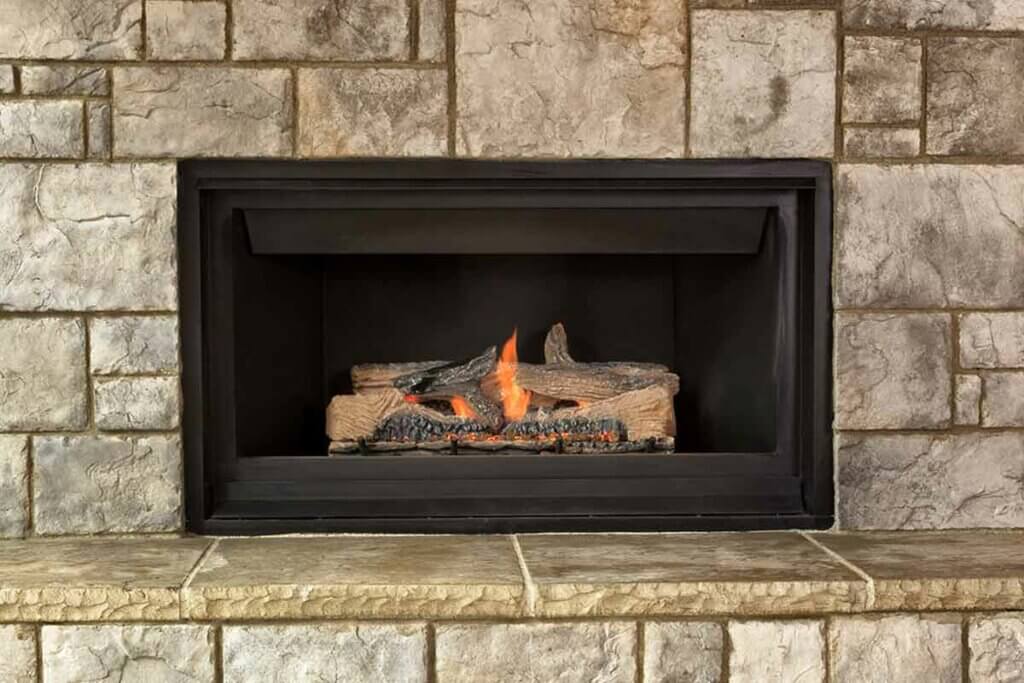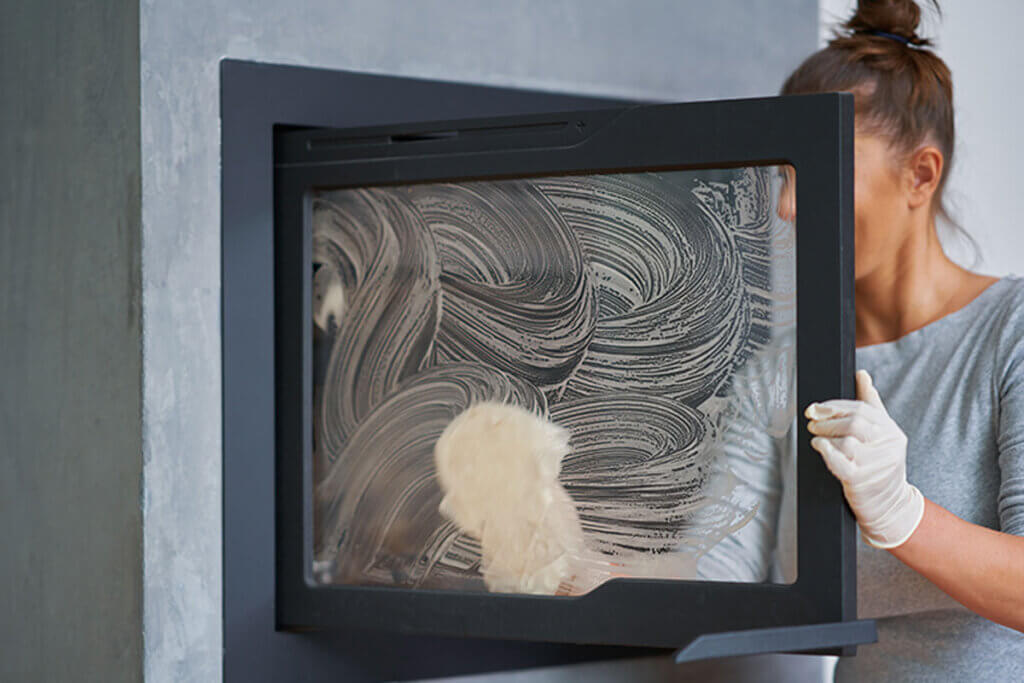Discover How to Clean Your Chimney

If you have a working fireplace at home, then you should learn how to deep clean your chimney. We’ve provided a step-by-step guide to make it easy for you. Not only will you be able to show off this feature, but you’ll also avoid accidents due to obstructions and soot accumulation.
We’ve focused on cleaning this area because it’s a place to which we give little thought and we simply just enjoy the heat that it emanates during colder days. But, it turns out, the soot that it generates, as well as the remains of flammable products, are dangerous to our health.
So, on this note, we’re going to explain how you can clean your chimney in-depth and be reassured that it’s safe and ready to use.
Why do you need to deep clean your chimney?
It’s necessary to clean your chimney thoroughly and regularly to ensure it’s safe to use. As we mentioned, the soot that’s created during its use can cause obstructions that generate toxic gases. Its buildup also creates creosote, which is a thick, tar-like, toxic liquid that’s difficult to remove from surfaces.
Beyond thinking about the difficulty in cleaning up this waste when it accumulates, you should be aware of how to remove it because it can trigger a fire inside the home.
Whilst we don’t want to alarm you, we do want to stress that it’s important to ensure your safety.

How often should I clean my chimney?
This is an excellent question, which has an interesting answer. Chimneys should only be cleaned once a year, ideally accompanied by a maintenance review. This will ensure that everything works, is in order, and that any issues are resolved. This task does require a degree of knowledge about how a chimney functions, so if you’re in doubt, contact a professional.
For your part, you can clean away the soot every time you use your fireplace. Doing this judiciously will reduce maintenance to once a year, otherwise, more technical support may be needed. However, it must be said that the work of clearing this residue isn’t an easy task. It’s (literally) dirty work and it implies a level of risk that you should consider.
What tools or equipment do I need?
To clean your chimney, some knowledge is required, as well as appropriate clothing or at least, clothing that you can dispose of afterward. In addition, you must wear a special mask to prevent you from breathing in soot microparticles that remain in the air. You should also wear protective eyeglasses or goggles.
You’ll also need to have a sturdy ladder in order to reach the roof, a special brush for cleaning chimneys, and some protective sheeting for the interior of your home. The sheeting can be made of cloth, newspaper, or plastic. Don’t forget, in specialized stores, you’ll be able to find chimney cleaning kits that include most of the items we’ve mentioned.
Follow our step-by-step guide to cleaning your chimney
Once you have everything to hand, it’s time to follow our steps so you can clean your chimney efficiently.
1. Cover the areas near the fireplace
The first thing you should do is take the plastic sheeting, cloth, or newspaper to cover the areas indoors, near and surrounding the fireplace.
It’s also a good idea to remove ornaments or items that are close to the fireplace and that may be at risk of soot damage. Moreover, make sure you’re appropriately dressed for the task and don’t forget to put your protective clothing on.
2. Clean your chimney: remove the firewood and ashes inside
Start by removing the firewood that’s inside the fireplace, and place it in a safe area, where it won’t damage or dirty anything. Then, take an old broom or hand brush and sweep away any ashes that have been left under the wood.
3. Remove the soot
The next step is to sweep the chimney. To do this, use the chimney brush that you’ve bought and clean the extractor tube. You must do this with enough force to remove the soot, but carefully so as not to detach the tubes.
Immediately afterward, you should do the same with the chimney walls and for this task, you’ll need a brush with stronger bristles. This is because the soot adheres more to these surfaces.
4. Collect dust with a vacuum cleaner
After removing the soot from the chimney, it’s time to collect what’s left in the tray with the help of a vacuum cleaner. Be sure to vacuum the joints and corners to make sure there’s no residue.
5. Reinforce your cleaning
Although it may seem like it, the cleaning process hasn’t finished yet! Reinforce your efforts by using a special product designed for the fireplace that usually comes ready to use. Alternatively, if you prefer, you can make a homemade paste with baking soda and earthenware soap.
If you decide to use the homemade alternative, apply the paste on the walls of the chimney and leave it to act for 30 minutes or more, depending on the degree of cleaning required. Then, you can remove it with a damp cloth soaked in hot water.
6. Clean the glass

If your fireplace has a glass door, you should clean it. To do this, take a soft sponge, apply liquid soap, and scrub until the dirt disappears. To dry, take a piece of newspaper and rub. You can also do this with a dry cloth.
7. Dry and you’re done!
Finally, dry your fireplace with newspaper and allow it to air out to remove moisture. Meanwhile, collect the sheeting and implements that you’ve used so far, and clean any areas surrounding your fireplace.
Clean your chimney and enjoy a safe and warm home
After cleaning your chimney you can enjoy your fire with greater peace of mind. However, if you haven’t cleaned it for years, it may be better to engage a professional service. Once you know that your fire is safe to use, you can maintain it with preventive cleaning after each use.
Remember, even gas fires need cleaning and maintenance.








